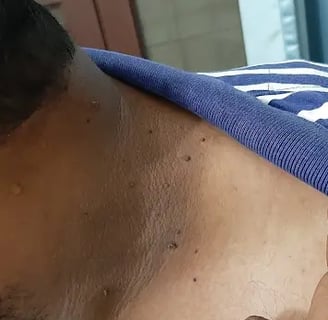What causes warts?
HPV or Human Papilloma Virus causes warts in humans. But this is only possible if the person having HPV gets under influence of sycotic miasm(one of the three fundamental causes of chronic diseases).
DISEASES & DISORDERS


Each person is a dynamic being, influenced by various factors, not just by microorganisms like viruses and bacteria. When discussing the host, agent, and environment in diseases, we often overlook the host factors and directly blame the agent, such as HPV in the case of warts.
Miasms are considered the fundamental cause of chronic diseases in homeopathic theory. The sycotic miasm, in particular, is associated with overgrowth and chronic inflammation. Individuals with a sycotic predisposition may have a heightened tendency to develop conditions characterized by excessive cell growth, like warts. If a mother has a sycotic predisposition, this tendency can be passed on to her child at birth, influencing their susceptibility to certain diseases.
Many people with the HPV virus may never develop warts, but those with a sycotic predisposition are more likely to be affected. This predisposition plays a crucial role in determining whether the virus will manifest as warts.
Warts are often thought of as a sexually transmitted disease, but they can also appear in infants and young children. How does this happen? Predispositions, like sycotic tendencies, can be inherited. The virus or agent is less important in causing the disease than the host's predisposition.
So why do we fall ill? According to Dr. Hammer's GNM theory, every disease is caused by mental conflicts. For the skin, this is a separation conflict, such as being separated from a mother at birth, or feeling isolated due to family issues, school, or social dynamics. Similar conflicts occur in pets and the elderly.
A separation conflict involves the distress caused by either wanting to separate from someone or something or feeling forcibly separated. This can include scenarios like a newborn being separated from their mother, children being punished or scolded, the arrival of a new sibling, parental divorce, or even the loss of a favorite pet. In adults, it can manifest through the fear of losing contact with loved ones, relationship issues, or workplace conflicts. These conflicts lead to a biological response, where the body tries to cope with the emotional distress, potentially resulting in physical symptoms like warts.
Warts result from excessive healing due to ongoing conflict relapses. They form on the skin areas associated with the separation conflict. Warts can appear raised or flat, singly or in groups, and similar growths include skin tags and genital warts, which are linked to sexual separation conflicts.
Plantar warts form in the deep basal layer of the epidermis, typically on the soles or toes. These warts reflect conflicts related to wanting to "separate" from a place or not wanting to leave it. Pets can develop warts due to unwanted moves, and certain types of footwear can also lead to plantar warts. Claims that plantar warts are caused by HPV lack scientific basis.
By understanding these dynamics, we can better grasp the true nature of warts and their causes.
